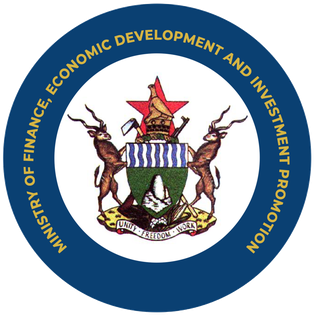
TODAY I am reminded of an illuming conversation with a lecturer who postulated, quite succinctly, that “if the current modular learning system was accommodated in medicine, doctors would become butchers” (no disrespect to the butchers but I don’t want my beef cultured).
So, unless we want to wear the Emperor’s new clothes, let us talk about this!
We cannot sacrifice professions for, to put it bluntly, something that does not cut it in the long run, or at the very least, not operably with the status quo.
Though, while a mere critique blatantly risks losing it's objectivity by virtue of assumption, let’s load a Socratic method buckshot before going for the kill: Because this latest buzzword and “panacea” for education requires us to take a step back and think this through.
One should ask, are we really helping students by breaking down learning into bite-sized lumps?
Or does this modularity not risk reducing knowledge to a sheer aggregation of disjointed parts?
I mean, is there a risk to the integrity of professionalism?
And what about the contexts between theory and practice? Do they not get lost in the shuffle too?
- Mnangagwa-commissioned tertiary projects run aground… Nust student centre abandoned for about two decades
- Future of legal profession bright: LSZ president
- Our programmes meet industry needs: ESAMI
- The devil, the details and how modular learning should definitely walk the distance
Keep Reading
Besides, are we convinced that our modular learning is the one unadulterated answer?
If so, tell me this, is and will this mainstream model deliver on all its promises?
Now, given that the onus is on us to scrutinise the aforementioned, this is my Kill Bill on the matter — This andragogical approach; which is predicated on fragmented learning of courses into two quarters of six weeks; did not fare well in its implementation and operation in universities after our Higher and Tertiary Education ministry adopted it through Zimbabwe Council for Higher Education (Zimche).
As a horizontal modular model, it triggered limited lecturer-and-student-scaffolding, and, its time constraints ate away the flexible learning that accommodated the learners’ unique needs, pace and learning process.
In any case, it fostered a culture of “cram-pass-and forget” which the infectious world of Large Language Models (Ai) has exacerbated (ask any educator of renown).
Of course, many were said to have cried wolf, as Professor Paul Mapfumo’s 2022 speech alluded, but we cannot be blind to the chaff in the wheat the intrinsic emphasis on passing under this model often overcasts the mastering of the fundamentals of respective practicums.
To illustrate, the social sciences, social work to be more precise, practical learning has since become a tall order, for the most part.
You see, social science practitioners require a step-by-step learning approach that allows development of competences and skills without being turned into anti-personnel mines that are systematically compounded and pressured.
Naturally, modularisation risk factor is coloured by incompetence that is built as the future professionals’ capability is found lacking due to this “packaging model”.
Claretah and Mhishi research, which was published in the third quarter of this year, however, attributes modulisation problems to mixed attitudes, but rightly noted how there was “absence of proper consultation with stakeholders and dissemination of information regarding the education reform” which, thereby affected the implementation process.
Whereas, the work of Barbara Goldschmid and Marcel Goldschmid, during the last legs of the 20th century, echoed the problem of adaptability, which, considering the number of students, Zimbabweans has a long way to go.
Besides this, modular learning has been inferred to be more inclined in the commodification of higher education: with students being viewed as customers and knowledge, a secondary concern.
Even with Zimbabwe’s simultaneous use of semesterisation and modularisation, we are still grasping at a contextually satisfying model despite yearly acclamations.
Obviously, we can eat our tail in the game of what has been lacking in our education system, but, now, the question becomes: How does modular learning evolve and walk the distance to address some of these issues?
One way is to inaugurate student autonomy in terms of online and experimental work, just as Forbs substantiated in 2019, stating a customised skill building system will be revolutionary in learning.
Equally illuminating is the Western Sydney University model which aims to provide personalised support and referral to specialist services through use of success coaches; in its case, modelling a four-week-workshop styled approach per module that uses real world assessment instead of lectures and exams; with online learning and practical classes as a cherry on top.
Jordan B Peterson’s up-and-coming Peterson Academy’s online system, cost-effective model and general foci on how to properly educate is not shy of innovation and should be studied too.
And since the modular approach is directly-linked to learning outcomes, there should be comprehensive definition and alignment of independent course designs and curriculum; as well as technological and cost-effective modelling that factors professional requisites and our socioeconomic reality.
In fact, taking a page from Gahutu studies in Rwanda, since modular learning efficacy is said to be best served in practical and demonstrative classes, this calls for resources such as better access to the internet, course specific materials, rich libraries, a less minimalistic model; and a student-centred and adaptive framework that is negotiated by academia members and conjoined Profession Councils.
Modularity should simply have students learning at their own pace, with student accountability and responsibility met with institutional accountability and responsibility in addressing the above-mentioned issues.
Each discipline or degree should be framed differently in the hope of affording a self-initiated, self-directed and self-assessed system.
In brief, the model should aim to bridge academia and marketplace interaction; appealing to technological realities and practical skills.
As the most conducive model for restrictive circumstances such as those of COVID-19, according to some intellectuals, it should be utilised appropriately.
It should never act as dogma since these same circumstances may add to not so much acquired taste of happy-go-lucky-and-cram-away piecemeal “ideal”.
Therefore, before the market starts asking if there is a ghost in the shells that universities produced to regurgitate information only to be spat for the next pocket that finance the business of “education”, lets address this.
The devil is in the details and not in the abstraction that overlooks the psychosocial impact on students, focusing instead on teaching to test while throwing the book at stakeholder engagement.
I will leave you to open your third eye on this.
- Haggai Muchapondwa writes here in his personal capacity.











